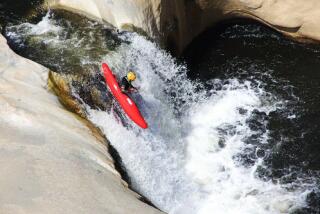An unstable relationship that he can count on
During the last three years, I have climbed my mountain more than 50 times. It’s my escape to a world devoid of human ingenuity. Between me and the pale moon overhead there is only air and the great distances of the universe, a fact that comforts me. I usually hike alone, and once above Gallegos Lake at 11,000 feet I almost never meet another person. This suits me well because in my dotage I have grown tired of the human gabble.
The top of my mountain is bald, covered by rocks and tundra grasses. The summit stands three yards short of 13,000 feet, so sometimes I can see all the way to Sandia Peak beside Albuquerque, 130 miles distant. Directly east, across the Gallegos Lake amphitheater, rises a massive grassy pyramid, Gavilan Hill, one of the higher points in New Mexico.
Three ridges lead away from the high point. The ridgelines are narrow and difficult to walk: dicey bouldering is required. In electrical storms there’s no place to hide. You can’t bail onto the talus and scree fields swooping down toward the Engelmann spruce forest because those slopes are steep and unstable.
I have grown accustomed to feeling tiny and unimportant in this terrain. I am most at home here when I’m all alone, a trifle scared, concentrating fiercely as I move through a world of jumbled stones, aware that I must never lose my balance and hurt myself.
At the ridge’s low point is a meadow of lush vegetation where I have asked my children to scatter my ashes. In full summer the meadow becomes yellow with alpine avens. I find sky pilots and old-man-of-the-mountain sunflowers there. I dream of spending a night at the meadow, but am deterred by the desolation and cold. Too, I have a condition known as oscillopsia, an inner ear problem that skews my balance mechanisms — I cannot walk in the dark. My tricky heart requires digitalis daily, yet if I locked in arrhythmia and had to bail off the ridge at midnight I couldn’t do it. When darkness falls I am helpless until dawn, hence I’m afraid to camp on top of my mountain.
Weather permitting, I always sit for a spell gazing down at Catherine Lake in a small half-wooded cirque below. Deer Creek begins at Catherine Lake and trickles through the dwarf spruce trees and bristlecone pines, descending past Cabrito Peak toward the sagebrush mesa and my hometown many miles below.
Over the ridge begins a different watershed for the South Fork of Midnight Creek, which springs up just below a long avalanche chute at a small green puddle called Hidden Lake.
So: Here there are no trees, no bushes, only grasses and sedges and rocks and scree fields, and sometimes many wildflowers that do not grow much higher than my ankle. On most days powerful winds blow from the southwest, herding vast gaggles of clouds before them.
Walking the ridgeline from my mountain to Catherine Overlook can be difficult. I have to lean into the wind, and usually I stagger a lot. My hiking poles keep me from tipping over. I hate the wind and I love the wind. Sometimes all I can do is crouch close to the grass and wait for a lull, buffeted by invisible heavyweight punches. Tears are wrenched from my eyes, and I feel like crying. The winds make me sore, an ache that lasts for hours. I can lie in bed at midnight still feeling battered by turbulent air.
October snowstorms might catch me by surprise, but I can always calculate the danger and hurry home before dark. I am never more than three hours away from my car. I don’t carry a cellphone, and I never tell anybody where I’m headed. If I broke my ankle or banged my head I’d be in trouble, so I’m careful. I must concentrate. I like being responsible for myself in such rugged terrain.
There’s an edgy romance to every trip I take, mostly because I am 64 and slightly infirm. Ten years ago I blew out a valve on my heart and went through open-heart surgery. I work hard to climb that mountain. Quietly, I plod along, sweating buckets, always touched by beauty. I carry a point-and-shoot camera, taking many photographs of the same locations during infinitely varied conditions. At home I have drawerfuls of these photo packets. I don’t know if anything will ever “happen” to these pictures. They are simply a part of the journal I write after every trip to the high country.
Yesterday, I climbed my mountain again. I saw five bighorn ewes grazing on a slope across the basin. Closer by were four mule deer bucks bedded among shrubby cinquefoil bushes on an avalanche chute. I had to climb steep unstable talus and traverse a dangerous snowfield. On my way through dwarf willows at 12,000 feet, I saw white-crowned sparrows and Wilson’s warblers building nests. Swampy areas at high elevations were full of blossoming marsh marigolds. On my return I watched a large bear demolishing a field of Porter’s lovage that we in New Mexico call Ósha.
The ravenous creature filled my spotting scope for half an hour, while all around us hermit thrushes sang.
It was another lovely day in an alpine territory that has become the great adventure of my advancing years.
*
John Nichols is the author of “The Milagro Beanfield War”and other novels and books of nonfiction. He lives near Taos, N.M.
More to Read
Sign up for The Wild
We’ll help you find the best places to hike, bike and run, as well as the perfect silent spots for meditation and yoga.
You may occasionally receive promotional content from the Los Angeles Times.










